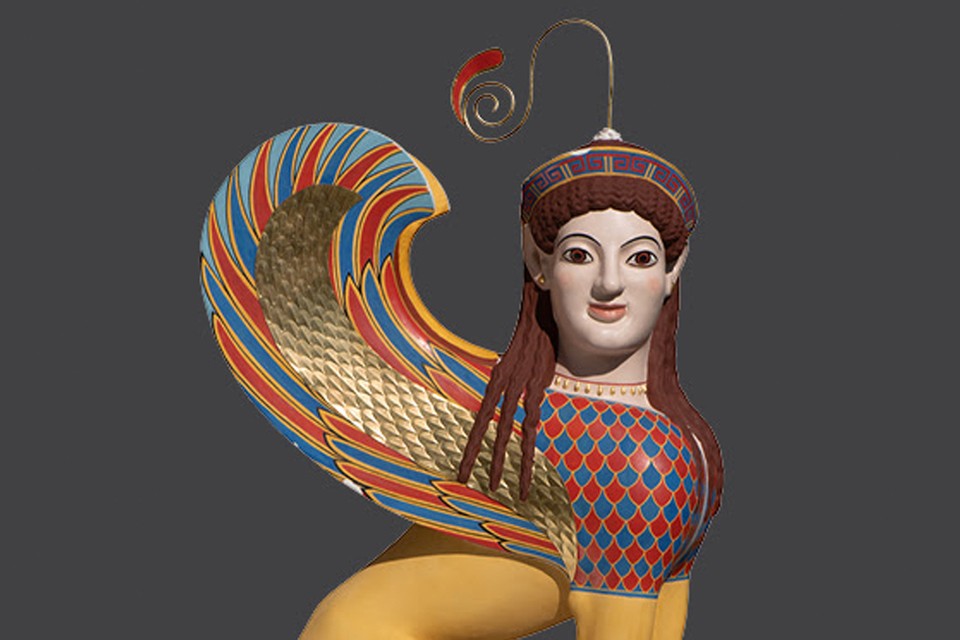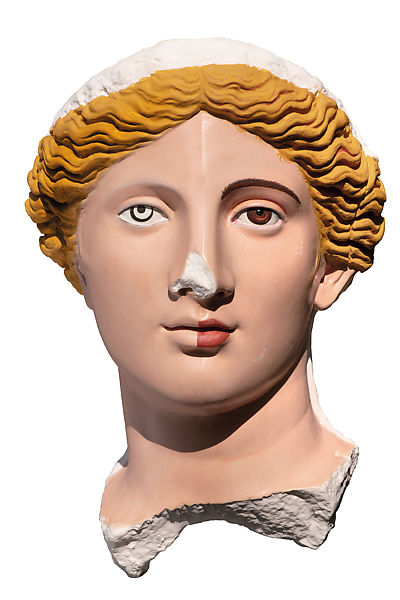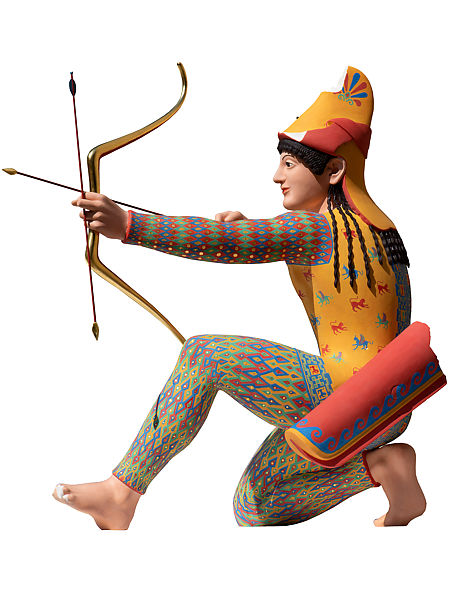
The idea that the human species can be neatly bracketed into racial groups based on superficial characteristics like skin, hair, and eye color only developed in the 18th century, and mainly took root as a pseudo-scientific justification for slavery and colonialism. Central to that idea was the Classical Ideal of Beauty, a standard supposedly set by Greek and Roman statuary from antiquity. As beliefs in regional supremacy in Western Europe transformed in the modern era into “White” supremacy, the stark whiteness of antique statuary became a specific point of pride. But ancient people did not think in terms of race, and ancient sculptors never intended their creations to stand around in public without color. “For the ancient Greeks and Romans,” Elaine Velie writes at Hyperallergic, “white marble was not considered the final product, but rather a blank canvas.”

As Metropolitan Museum of Art curator Seán Hemingway says, “White supremacists have latched onto this idea of white sculpture — it’s not true but it serves their purposes.” Art historians and conservators have known for decades that statues from antiquity were once covered in paint, silver and gilding, a process known as polychromy. Over time, the colors dulled, faded, then disappeared, leaving behind only the faintest traces.
Husband-and-wife research team Vinzenz Brinkmann and Ulrich Koch-Brinkmann have spent over 40 years studying polychromy and reconstructing ancient sculptures as they would have appeared to their first viewers. “Their Gods in Color exhibition has been touring since 2003,” Velie writes, “and their replicas have been included in museums around the world.”
Now fourteen of those reconstructions, as well as a couple dozen more created by Met conservators, scientists, and curators, are scattered throughout the Met’s sculpture halls, with a small upstairs gallery dedicated to an exhibit. The exhibition explains how researchers determined the statues’ colors, “the result of a wide array of analytical techniques, including 3D imaging and rigorous art historical research,” writes the Met. As Artnet notes, the “richly colored version of the Met’s Archaic-period Sphinx finial,” which you can see at the top of the post, “serves as the centerpiece of the show” – one of the only pieces placed adjacent to its original so that visitors can compare the two (using an Augmented Reality app to do so; see video above).

Chroma: Ancient Sculpture in Color, which opened on July 5th, disabuses us of old ideas about the blank whiteness of antiquity, but that’s hardly its only intent. As it does today, color “helped convey meaning in antiquity.” The colors of ancient statues were not simply decorative surfaces – they were integral to the presentation of these works. Now, color can again be part of how we understand and appreciate classical statuary. And the full acceptance of polychromy in major collections like the Met can begin to put to rest false notions about a classical devotion to whiteness as some ideal of perfection. Learn more about the 40 reconstructions in the exhibition at the Met here, and learn more about polychromy and ancient uses of color at the links below.
via Hyperallergic
Related Content:
Roman Statues Weren’t White; They Were Once Painted in Vivid, Bright Colors
How Ancient Greek Statues Really Looked: Research Reveals Their Bold, Bright Colors and Patterns
Josh Jones is a writer and musician based in Durham, NC. Follow him at @jdmagness


Interesting art colour restoration research, a pity about the total codswallop of current day woke re-interpretation of history.
Agreed, Alan. The notion of purity of unpainted marble is that we are able to see and appreciate unadulterated form. It has nothing whatever to do with “white supremacy,” not even the whiteness of the marble as such, but rather its blankness as stage for the pure interplay of light and shadow to describe form.
The researchers are Vinzenz Brinkmann and Ulrike (not Ulrich) Koch-Brinkmann
By “woke” do you mean folk who are against racism? Does meant “anti woke agenda” mean you are pro racism? If so, what’s your favourite kind of racism? Do you prefer Victorian Colonial Racism, modern Trumpian, or just a good ol Nazi?
Those denying a link between the whiteness of sculptures and concepts of white supremacy in their comments have just not read the documents and literature. Parading their ignorance about the connection is unfortunate, to say the least.
One point I do take issue with is that it is only in the last few decades that art historians, and indeed artists, have known that antique sculpture was coloured. The British sculptor John Gibson coloured his version of Venus in the 1850s.
People might also want to see what they are doing at Canterbury Cathedral, where parts of the mediaeval cathedral are being returned to the full polychromy that would have been familiar to our mediaeval ancestors.
Oh Christ!
OK do any of you nay-sayers actually know anything about the Nazis?? 😬 You really need to learn about history. Nowadays, saying the word “woke” is a great way to distract from the actual subject being discussed. This is how the sculptures were originally intended to be seen. The concept of White Purity is certainly relatively modern,and more to do with the kind of people who are leaving remarks like yours.
Exactly my point. And yes, prior to the 16th century, the painting of statuary was the norm.
This is the post I was responding to in my 2nd comment.